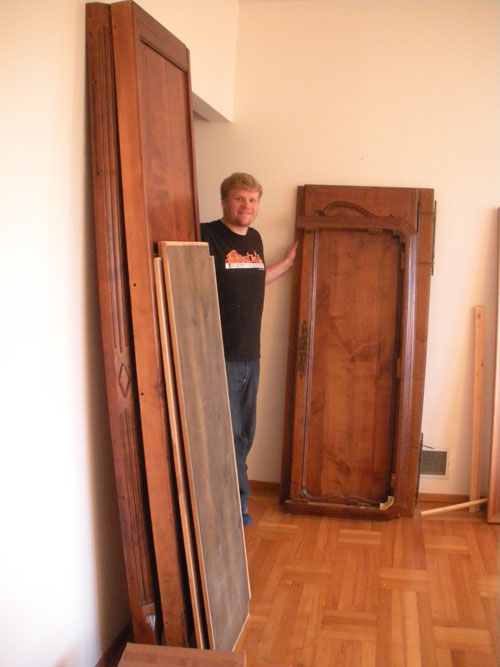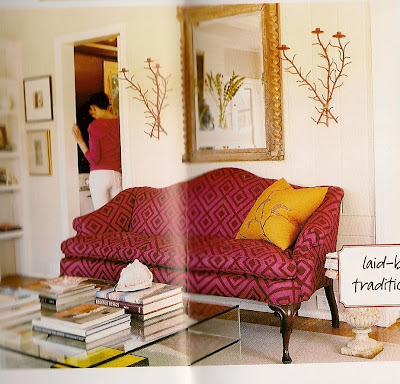We absolutely love our current landlords so we want to leave our apartment in tip-top shape when we move out. Therefore, I took down our self-installed bookshelves and mirrors and spice racks and magnetic bulletin boards that we hung during our stay. I was a bit overwhelmed when I realized that I would have to do a major repair job to fill the holes in the walls left by the wall anchors when I removed them.
Repairing gypsum wallboard, more commonly known by its trademarked names Drywall or Sheetrock, is considered simple by even the least experienced DIY blogger, but I was kind of dreading the task. I can be rather lazy with things I do not consider myself and expert and can't do well—which is pretty much everything. I get a little stressed and lock my initiative into my own personal panic room in my head.
 |
This Vinyl Spackling is cheap and it works well. |
I trudged down to Cole-Fox Hardware and bought the supplies I needed—½ quart of vinyl spackling, a 3” flexible wall scraper (or putty knife to the ol’ timers), a fine/medium grade sanding sponge, and a new paintbrush to touch up the walls with some paint after puttying.
My first chore was to remove the wall anchors. I pulled out my antiquated corded drill and locked in a ½” drill bit. Lucky for me, all of the anchors in our walls were plastic so a common drill bit would easily drill them out.
Lesson learned #1: when installing wall anchors, understand the load applied to the wall before picking your anchors. You may not need toggle bolts to hang a picture frame. You may not want to use light duty conical plastic anchors to hang a shelf that shows off your Harry Potter hardcover book collection. Properly sizing wall anchors is crucial to avoiding catastrophic anchor failure (we installed our printer shelf twice) and avoids damaging your wall unnecessarily during both installation and demolition.
 |
You never, ever want to risk the Harry Potter book collection. |
Unfortunately I didn’t consider the load on the walls before sizing my wall anchors—I just installed what I had in stock and used larger anchors than were actually necessary in most cases. The walls of our apartment looked like a ½” gyp board gopher raided them after I drilled out the anchors.
 |
The flexible wall scraper is a very useful tool to apply spackling thinly and smoothly. |
Next, I began the process of spackling. I quickly read the directions on the spackling container, which basically were stir, apply, wait, apply again, wait again, and sand if necessary. So I did exactly that. I stirred then applied the first coat of spackling that night with my new flexible wall scraper and went to bed. I woke up the next morning, stirred, and applied the second coat of spackling. That same evening I sanded all of the spackling with the sanding sponge. My shoulders are still sore—sanding is a lot of work.
Lesson learned #2: apply the spackling as thinly and smoothly as possible to cover/fill the holes and decrease the amount of sanding necessary to feather the dried material into the existing finish. That is apparently why you use the flexible wall scraper—to apply the spackling thinly and smoothly by "scraping" the knife along the face of the wall. Not just slapping it up there willy-nilly. Go figure.
 |
Your basic sanding sponge. It's like a sponge, but you sand with it. |
I located a can of paint that matched the color of our walls and then painted the spackled areas. After cleaning my new paintbrush with cold soapy water, because I should at least attempt to keep my tools in good shape, the spackling task was complete. The walls look good-as-new and are ready for final inspection by our beloved landlords.
Total time: 3 hrs over 2 days
Total cost: $17.13
Dean










